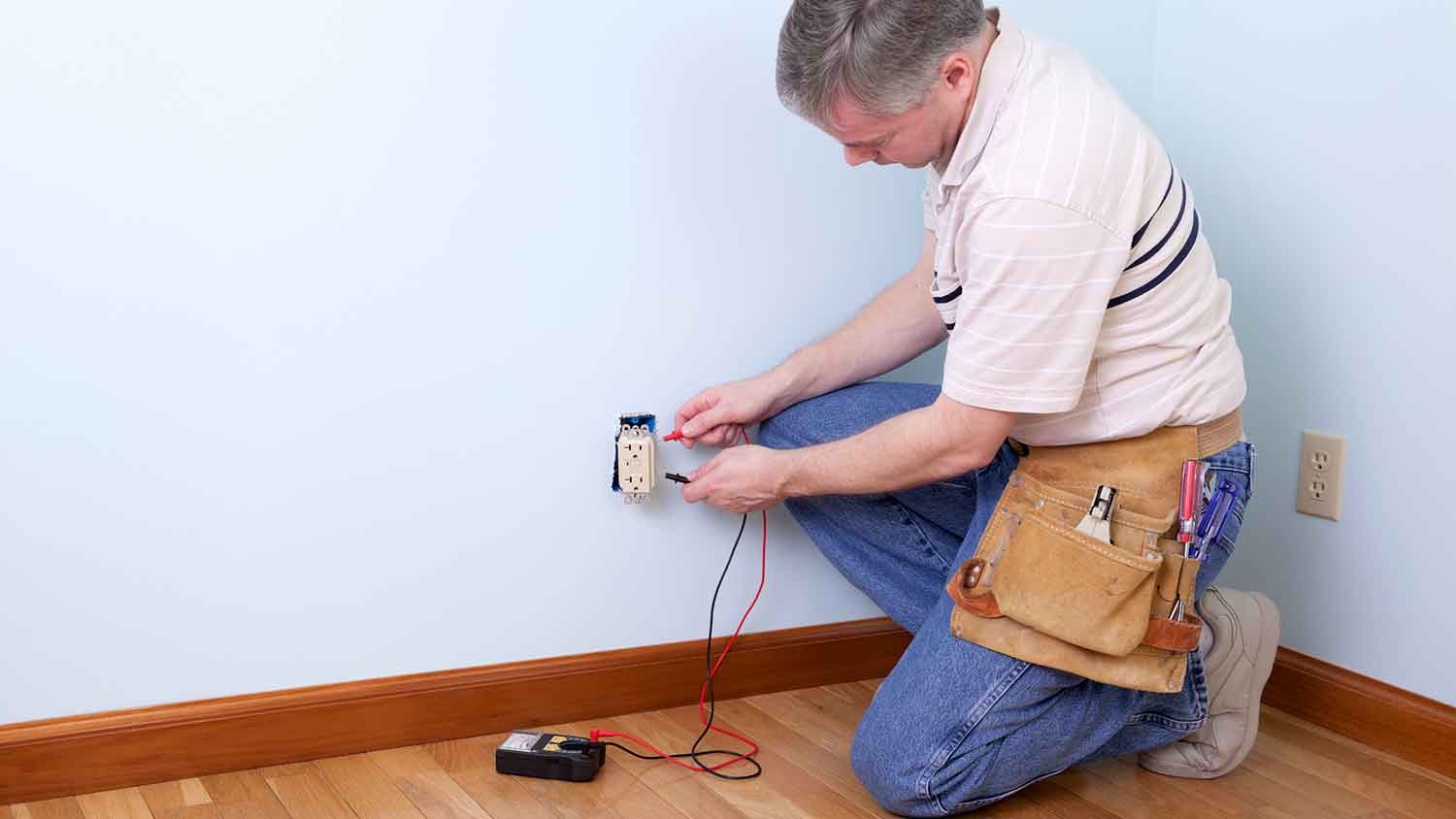
Old or worn electrical wires can interrupt the electrical supply to your home. Find out the cost to replace the wire from the meter to the breaker box.
Before you upgrade your outlet, make sure you understand the differences between these terms


Line connections carry current upstream.
Load connections carry current downstream.
Line and load are clearly marked on most GFCI receptacles.
Installing a GFCI outlet adds important shock protection to your home. With some research and care, this can be a DIY project, but it’s more complicated than installing a standard outlet. You’ll need to understand GFCI outlet wiring line vs. load, for example. Our guide breaks down the differences so you know exactly what to do.
A GFCI outlet has terminals labeled “line” and “load.” Wiring it correctly will enable it to detect sudden changes in power levels that can indicate a ground fault. The GFCI outlet will instantly shut down power if it detects diverted amps—fast enough to prevent a shock or other problems.
| Type of Difference | GFCI Line | GFCI Load |
|---|---|---|
| Electrical | Incoming current | Outgoing current |
| Voltage Reading | Hot; about 120 volts | Inert; no voltage |
| Location of Terminals | Bottom of outlet | Top of outlet |

Electricity in a building needs to complete a closed circuit as it’s used. Since GFCI outlets work by monitoring for changes in power levels, they need to know in which direction the electrical current is flowing. That’s why line and load are important. Here’s the breakdown:
Connect incoming power wires to the line terminals. GFCI line wires carry power “upstream” from the electrical panel.
Connect outgoing power wires to the load terminals. GFCI load wires carry power “downstream” to other outlets and hardware, eventually completing the circuit.

If you’re hoping to save on the costs to replace electrical outlets by DIYing the work, you’ll need to test the wires with a non-contact voltmeter or multimeter to make sure you know which is which.
You’ll need to keep the power on to test for the line and load, so proceed with caution. Then, shut the power down on your circuit breaker before you begin attaching wires to lower the risk of an electrical shock while you’re working. Do not turn the power back on before fully connecting all line, load, neutral, and ground wires in the outlet.
Here’s how to tell line and load wires apart:
GFCI line: The line wire will read as “hot.” It will show voltage near the expected 120 volts for an American power outlet. If you are using a multimeter, you can also test using ohms: In this case, the line wire will register ohms because electricity is flowing through, allowing the multimeter to measure resistance.
GFCI load: The load wire will not register as hot and won’t show signs of a live current. It should not show any voltage, and an ohms reading will come back negative because there’s no current to test.
If you feel uncomfortable with any of these steps, hire a local electrician near you instead.
On most GFCI receptacles produced in the United States, the back is very clearly marked with which terminals are which.
GFCI line: Line terminals are usually on the bottom of a GFCI receptacle. On the back, receptacles are typically labeled “LINE” with arrows showing you where to connect hot and neutral wires. It’s not always as easy to see, but the terminals for the hot wires are usually gold, too.
GFCI load: The load terminals are on the top of the GFCI outlet and usually marked with a clear “LOAD” label. As with the line, there are arrows showing you where to connect hot and neutral wires.
It’s best to connect wires in a sequential manner. Connect line wires to line terminals first, and then load wires to load terminals. Always test your connections when you are finished.
From average costs to expert advice, get all the answers you need to get your job done.

Old or worn electrical wires can interrupt the electrical supply to your home. Find out the cost to replace the wire from the meter to the breaker box.

Updating broken and outdated light switches isn't as tricky as you might think. We'll cover the considerations and cost to install a light switch in this guide.

The cost to install a 220v outlet will depend on factors such as what type of 220v outlet you need and other key factors you can learn about in this cost guide.

Selecting the right wire size helps your electrical system run safely and efficiently. Find out the correct wire size for 100-amp service panels.

Downed power lines are very dangerous. Stay safe by following these instructions if you ever encounter a downed power line.

Nothing’s more luxurious than your own hot tub after a long day. Maximize your enjoyment by hiring an electrician to wire your hot tub properly.